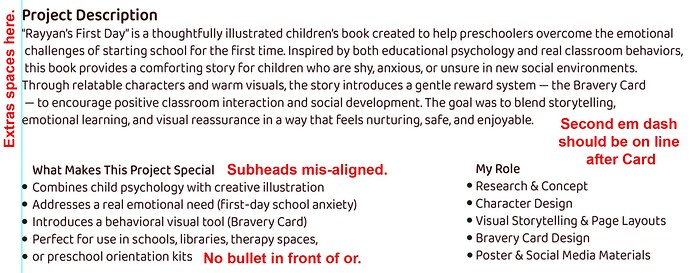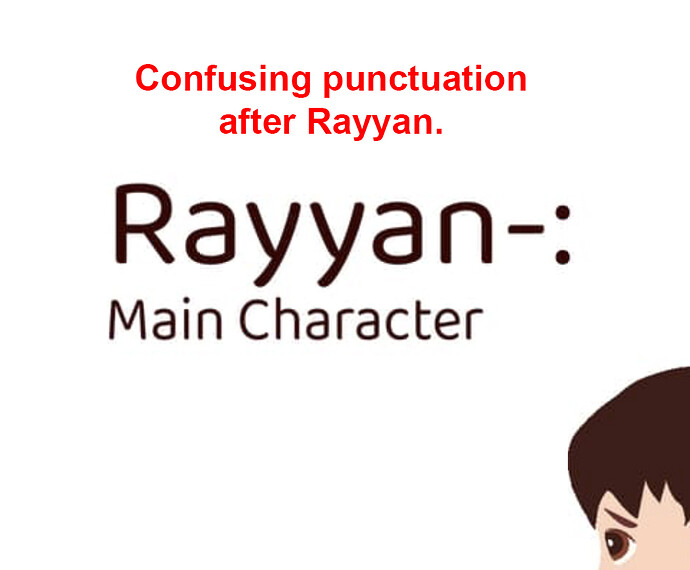Hy Everyone! I want some opinions from u guyz as I have completed my bachelors in graphic design and want to do a remote job first but I am building my portfolio first as my previous assignments as students are not much likable so Right now i just have my thesis work and a branding project and I want to persue my carrer as a branding designer and honestly I am new to industry i don’t know how to attract recruiters,communicate with them to get a job .So ,can you suggest me tips to do better and what things to put in resume ,coverletter and even in communication in order to get a remote job according to your experiences and looking at my portfolio .Many thanks!
Frankly, I’d be looking at a good few years studio experience with a good agency. You’ll probably have to move to a major city for a few years. That’s how you build a good portfolio and reputation.
Remote work will be a lot easier once you have a serious track record.
Target the agencies you want to work for and tailor your offering to their needs.
Hope this helps.
Thank u so much for your Time
Here are my thought:
Based on the sample you provided, it looks like you’re in Pakistan. When you say remote work, are you looking for work from a United States based company or are you looking for work from a Pakistan based company? If you’re looking for work from a U.S. based company, I don’t think that is going to happen. There are far too many designers in the job pool for a U.S. based company to hire a full-time remote worker in Pakistan. I’d say there might be a chance to get some outsourced work, more on that later, but I don’t think you’re going to get hired as a fill-time remote worker from a U.S. based company.
I have no idea what working conditions or the job market is like in Pakistan, so I have no wisdom to offer if you’re looking for remote work from a Pakistan based company.
I will say this, I like your illustration style. If you develop the illustration side of your skill set more and build out a portfolio dedicated to illustration, I could see you getting outsourced work from the U.S. I’m not saying it’s going to be easy; you’ll need to put the work in on portfolio sites and social media to get yourself out there and noticed.
You mentioned attracting and communicating with recruiters. Honestly, I’ve never tried to attract a recruiter, so I can’t tell you what they are looking for, but I can tell you that you need to work on your English grammar and your attention to detail. I get it, this is a forum, and some people write with a more conversational tone, but your post is full of spelling and grammatical errors. Maybe that’s you being conversational, but if I were a recruiter or looking to hire someone, I’d pass right over you.
When I look at the work sample you posted, which should not be in a conversational tone, I still see lots of grammatical and typesetting errors. See samples below. This tells me you don’t know how to properly set type and shows a lack of attention to detail — neither of these is going to help you advance a career in brand design.
If you are not a native English speaker, English spelling and grammar don’t matter in Pakistan, and the work sample you shared with us is something you did quickly just so the English speakers here could read it, then I suppose you can ignore my comments. On the other hand, if you’re wanting to work in any setting where English grammar is important, you will likely get passed over.
Hope this helps.
I was probably trying to build too many caveats into my previous post. Let me rephrase it this way. You need to determine how important English grammar and proper typesetting in the English language are to you. If they are important, these are areas that you’ll need to improve.
If this is going to be die-cut the boy’s neck is way too thin - you need to find a solution to get a bit more material in the middle maybe move his hands in towards his neck to get a more substantial bit of card to hold his head on.
Congrats on graduating! Honestly, every designer starts small, so don’t worry too much about having only a few projects. Create some passion projects (like fake rebrands) to fill your portfolio. When applying, make sure your resume highlights your strongest skills, and in your cover letter, keep it short and personal—explain what makes you excited about branding. For recruiters, be polite, show interest in their company, and try to connect over shared design values.
The last thing I want to see in a cover letter is what makes YOU excited about branding.
I want to see what you can do for my bottom line.
As for recruiters, you don’t work for them. They find you work. It isn’t so much about a recruiter’s company or their ‘design values’ it’s about where they can place you. Who are THEIR clients? Are their clients people you want to work for?
With reviews like these, this forum should be a royal academic of design.
And as a newbie to the design world, I would say that, that is a top-of-the-notch portfolio.
Looking at the replies here, I think there are a few useful takeaways you can build on.
First, do not stress about only having a couple of projects in your portfolio. A lot of junior designers pad their portfolios with passion projects or mock rebrands. This is standard practice and a good way to show recruiters your thinking and process, not just finished visuals.
Second, I agree with what has been mentioned about attention to detail. Branding is unforgiving, and typos, inconsistent spacing, or sloppy type can make good design look amateur. Even if English is not your strong suit, make sure everything you present is polished and proofread. That small step already sets you apart.
Third, when it comes to resumes and cover letters, tailor them to the role. As @PrintDriver pointed out, companies care about what you can do for them. Frame your skills in terms of outcomes: stronger brand recognition, clearer communication, or better visual consistency. Keep your cover letter short, professional, and specific.
Finally, regarding remote jobs, sprout is right that getting some agency experience first can help. But if remote is the only option, start with freelance platforms and smaller clients. Even one or two successful projects with testimonials can open doors later.
Build your portfolio with both real and mock projects, polish every detail, and frame your communication around the value you bring. Over time, consistency will matter more than speed.
Congrats on finishing your degree! You have very strong portfolio…
A strong branding portfolio doesn’t need a ton of projects — just a few well-presented ones. Show your process: research, strategy, sketches, color rationale, typography choices, and final touchpoints.
You’re on the right track by focusing on your portfolio first — that’s the most important thing for a branding designer. I’d suggest creating 2–3 strong personal or mock branding projects that show your full process (research, concept, logo, visual identity, applications). Recruiters love seeing how you think, not just the final design.
For your resume and cover letter, keep it clean and visual — highlight your design skills, tools, and any freelance or collaborative work. When reaching out to recruiters, be polite but confident; personalize each message and briefly explain why their company or brand interests you.
Keep posting your work on platforms like Behance, Dribbble, and LinkedIn — consistency and visibility really help, especially for remote roles.
Speed is important too. Consistency doesn’t meet deadlines if you are slow in your work.
And missed deadlines mean death to a designer’s career.





